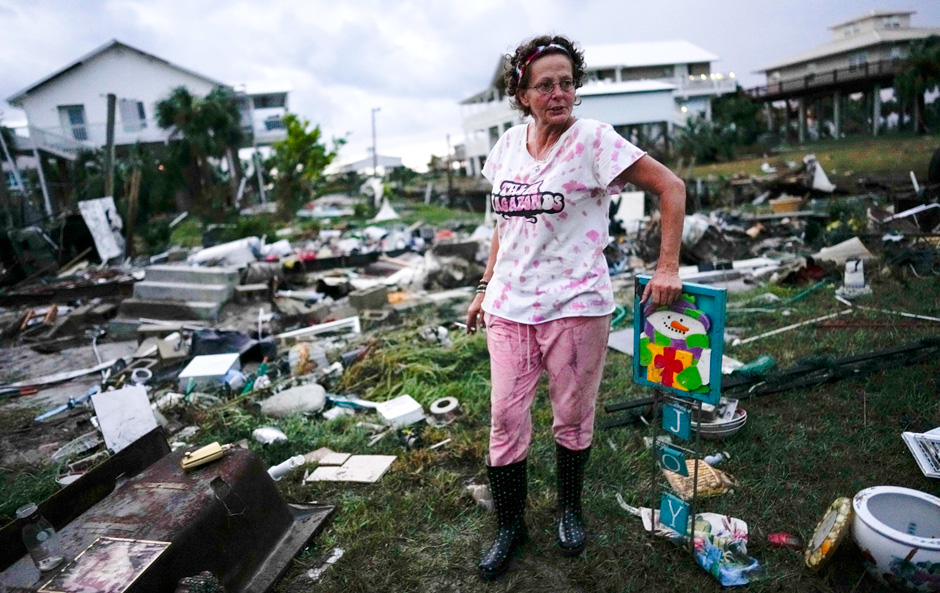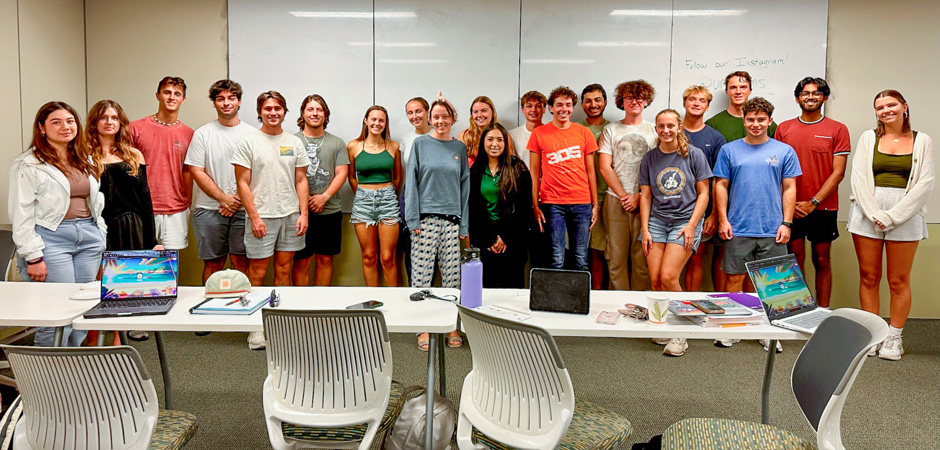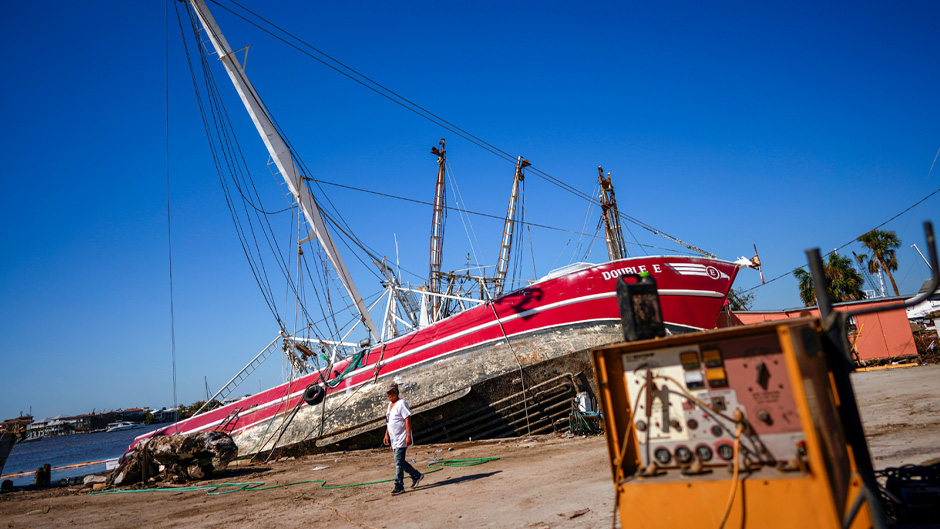Sixteen years to the day Hurricane Katrina devastated Louisiana, Ida slammed into the Gulf Coast state’s seaport town of Port Fourchon as a Category 4 cyclone on Aug. 29, 2021, leaving a widespread path of destruction.
Just over a year later, Hurricane Ian’s powerful winds and catastrophic storm surge destroyed thousands of properties and killed nearly 150 people in Southwest Florida.
And in late August of 2023, beach towns and fishing villages throughout Florida’s Big Bend took a direct hit when Hurricane Idalia roared ashore in the region as a Category 3 storm. One of the region’s small towns, Horseshoe Beach, population 171, “was just about wiped off the map,” one resident said.

In the cleanup and recovery efforts that ensued each of these destructive storms, government officials and residents alike were left to ponder a series of burning questions: How reliable and accurate were the weather forecasts at different lead times? Who was most vulnerable to storm hazards and why? And to what extent were warning messages received and understood by the public?
In a college course exercise believed to be the first of its kind, teams of students—all meteorology undergraduate majors at the University of Miami Rosenstiel School of Marine, Atmospheric, and Earth Science—answered those questions and many more, providing vital post-hurricane information that has not only become part of a United Nations agency database but also promises to aid forecasters, emergency managers, and the public in planning for and recovering from future tropical cyclones.

The exercise, part of atmospheric sciences professor Sharan Majumdar’s Tropical Weather and Forecasting class, employed the economic concept of a value chain to evaluate the flow of information for a high-impact weather event—from timely and accurate forecasts to the communication process that helps officials and the public prepare for storms. In economics, a value chain is a series of activities that go into the creation of a finished product, from its development to its delivery to the customer.
“This was an exercise that exposed students to a multitude of disciplines and taught them how those disciplines all connect,” Sharan said. He summarized the details of the exercise in a recent journal article in the Bulletin of the American Meteorological Society.
Starting with his fall 2021 class, teams of students—using a questionnaire developed by the UN’s World Meteorological Organization (WMO) and relying on sources that ranged from media websites to reports from the National Oceanic and Atmospheric Administration—investigated the hazards, impacts, warnings, and responses associated with three Atlantic landfalling hurricanes: Ida, Ian, and Idalia.
Among their findings:
- For Hurricane Ida, students found that channel runoff exacerbated flooding conditions in New Orleans, and they also identified the benefits of a new Federal Emergency Management Agency impact forecasting tool. Oil shortages, toxic mold in and near Louisiana, and flooded basements in New York City, which experienced the remnants of the storm, were among the impacts of Ida, students reported. Some of the response efforts in Louisiana were undermined by the COVID-19 pandemic and extreme heat, students found.
- Students noted that the hazard and impact forecasts for Hurricane Ian were dependent on a complex track forecast and that some key forecasts were misinterpreted. The students identified positive and negative consequences of “disaster influencers” on social media and noted inconsistencies in evacuation protocols. In their report, they applauded the response efforts of the Florida Emergency Management Agency and the availability of online resources for the public.
- Students reported a higher confidence in Hurricane Idalia’s forecast, likely resulting in more consistent messaging that allowed for effective preparation and decision-making. Still, Idalia devastated the timber industry in the Big Bend region, where recovery efforts were hampered in lower-income sectors, they noted.
- Different methods of public communication, combined with strong dissemination and communication between agencies, occurred for all three hurricanes.
Students compiled their findings into a comprehensive report that the WMO added to its database, allowing emergency managers, storm modelers, and researchers to mine the information to improve forecasting, warning communications, and hurricane response.
Their counterparts—interns at the Australian Bureau of Meteorology—worked on a similar disaster-related project, investigating the Australian Black Summer fires of 2019-20 and the eastern Australian floods of 2022.
Students in this fall’s Tropical Weather and Forecasting class will analyze the flow of information associated with one of the landfalling tropical cyclones of the 2024 Atlantic hurricane season.
Sharan, recently elected a 2025 Fellow of the American Meteorological Society, said the value chain-themed exercise can be adopted for courses in other University schools and colleges. “It’s relatively low maintenance to develop such a series of questions into a classroom exercise and to adopt the value chain for other types of real-life events that are not weather related. It could be a public health crisis, an earthquake, or some other type of disaster,” he said.
“The immersive experience offered by Dr. Majumdar in this class is one of the reasons students come to University of Miami to study meteorology,” said Paquita Zuidema, professor and chair of the Department of Atmospheric Sciences.
“A hands-on experiential learning experience for students” is how Lisa Murphy Goes, senior lecturer in the Department of Atmospheric Sciences and program director for the Undergraduate Meteorology Program, describes the course. “Knowing how to relay scientific information is an increasingly important skill as we strive to improve our forecasting of extreme weather events and to ensure better public understanding to save lives.”
For Jessica Weinberg, who was part of the fall 2023 class that studied Hurricane Idalia, the exercise will help guide her career choice. “The project provided valuable insight into different avenues of meteorology-related careers,” said Weinberg, who, as a youngster, experienced the effects of Hurricane Irene in 2011 while on a Caribbean cruise. “Being able to think about the human response to disasters shined a light on a variety of different issues, many of which I’d like to address in a future career.”
For Brendan Janasiewicz, “analyzing how risks were managed for Hurricane Idalia and how responses were carried out is definitely something that I will apply in a future career of either forecasting or emergency management.”
Meteorology major Mackenzie Carr found the Idalia exercise so enlightening that she is now pursuing her own independent value-chain project on Hurricane Beryl, which last June strengthened into the Atlantic Ocean’s earliest Category 5 storm on record, impacting parts of the Caribbean, the Yucatán Peninsula, and the U.S. Gulf Coast.
“Very educational,” Carr said of the exercise. “And then just the fact that what we did will eventually help others is just icing on the cake.”

